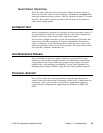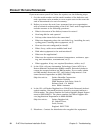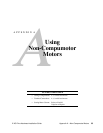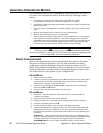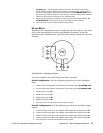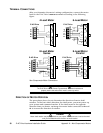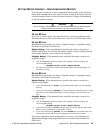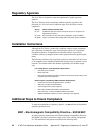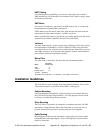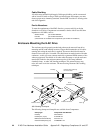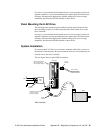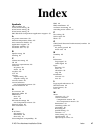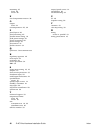
E-AC Drive Hardware Installation Guide Appendix B – Regulatory Compliance: UL and CE
43
EMC Cabling
For electromagnetic compatibility, you must use cables shown to be usable in
EMC installations. Cables should have a minimum of 85% braid coverage, and be
360° bonded at both ends.
EMC Motor
For system CE compliance, you must use an EMC-ready motor, or a motor that
has demonstrated acceptable EMC performance.
NOTE: Motors may bear the CE mark. This mark indicates the motor meets the
requirements of construction and safety—not EMC compliance .
Motors with shielded cabling or pipe thread style cabling options allow the easiest
integration into machines required to bear the CE mark for EMC.
Varistors
You must install varistors or other voltage surge limiting devices in order to meet
the requirements of EN61000-4-5. Place a Littelfuse V140LA1Ø or equivalent
varistor from line to line, and from lines to earth before the mains filter, as shown
in the EMC Installation drawing later in this appendix. (Intersil, General Electric
and Littelfuse manufacture equivalent varistors.)
Mains Filter
You must install a mains filter. The next table lists recommended filters.
Continuous
Filter: Current (amps)
6EP1
1
6
10EP1
1, 3
10
FN2070-10-06
2
10
1
Corcom;
2
Schaffner;
3
Available from Compumotor: 10 amp filter – part number 47-016140-01
Installation Guidelines
The E-AC Drive is made available under “Restricted Distribution” for use in the
“Second Environment” as described in EN 61800-3: 1996, page 9.
Cabinet Mounting
For Electromagnetic Compatibility, cabinet mounting is not required. However,
the E-AC Drive has high voltage terminals—for safety purposes, the drive must
not be user accessible during normal operation.
Drive Mounting
The E-AC Drive is designed to be mounted to an earthed metal panel. For EMC
performance, mount the mains filter to the same panel, as close to the drive as
possible. See the EMC Installation drawing at the end of this appendix.
Cable Routing
Route high power cables (motor and mains) at right angles to low power cables
(communications and inputs/outputs). Never route high and low power cables
parallel to each other.



